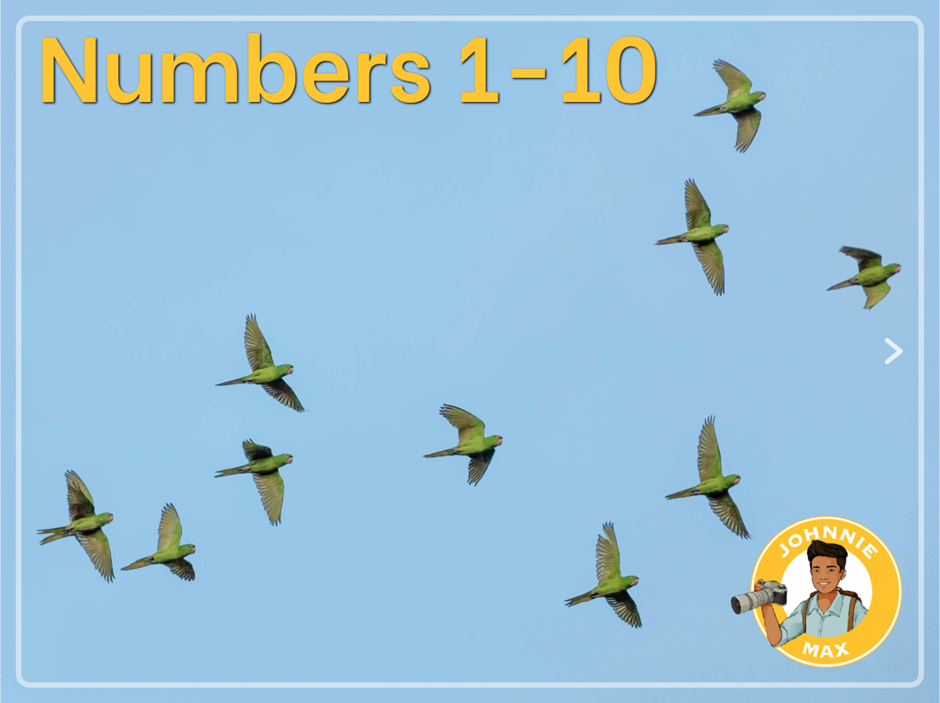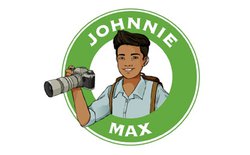Providing high-quality preschool education has the potential to positively impact the long-term health, social-emotional skills, and academic achievement of all young learners. That’s why the team created Johnnie Max, an online literacy program for preschool teachers, children, and families.
Johnnie Max does this by providing nonfiction interactive media featuring world-class photography from around the globe. the web-based platform provides easy access for classrooms with a free family portal for equity of access at home. The nonfiction content provides the richest context possible for oral language and content-area vocabulary development, and the research-based instructional strategies support teachers and families to help improve learning outcomes for all children.
Their mission is to build the foundations of early literacy, empower child-driven learning, and expand children’s worldview with equitable and safe digital access for all young learners
and their families. With Johnnie Max, adults guide children to self-reflect and relate positively to others as they discover their world. It’s critical that 3–5-year-olds have access to materials that increase literacy gains, broaden their perspectives, and prepare them for the digital information age. Johnnie Max seeks to support young children in their quest for learning and social understanding for a lifelong positive impact.

Formats/platforms used:
The Johnnie Max platform is built to be device-agnostic and works across all major browsers. It is optimized for use on desktop computers, laptops, Chromebook®, Android® tablets, and iPad®, using iOS, Android®, or Windows operating systems. The platform can also be used with interactive whiteboards for whole class or small group presentations.
Primary website URL:
Problem solved:
The Johnnie Max program endeavours to address the systemic barriers to education that effect low-socio-economic families of young children and support these historically underserved communities to impact equitable outcomes in education. They are dedicated to nurturing and strengthening the growth and development of all young minds. Their early literacy program increases the oral language and content-area vocabulary development for all children, while it also addresses the literacy and equity gaps prevalent in low socio-economic families, including those with low English language proficiency backgrounds. Through the program, they build strong foundational skills in literacy, content knowledge and vocabulary, social-emotional learning, and digital navigational skills. These skills help to equip all children to enter kindergarten on an equal footing.
Grade/age range:
The program is built for preschoolers 3–5 years old and Kindergartners. Because of the visual nature of the photographic content, some users may adopt this program for English learners up to grade 2.
Core or supplemental:
The program is a supplemental literacy program designed to enrich any core curriculum.
Standards:
The program aligns with PreK standards in literacy, math, science, and social studies, and can map to any state or national PreK standards, such as the Head Start Early Learning Outcomes Framework. It also aligns to the Common Core Kindergarten standards in Math and ELA. The Johnnie Max platform is designed to ingest any national, state, district, or organizational learning standards, so that progress reports will always be customized to align with the learning goals of each classroom.
Lesson time needed:
In the Program Implementation and Pacing Guide, they recommend engagement with the program for 15 minutes per day, which includes teacher read-alouds, small group and peer interactions, and independent work for just one 15-minute session per week.
Pricing model:
They provide access to the platform on a subscription-based model for an entire calendar year. For school districts, they typically provide a per-student subscription model. For child education centers, they typically provide a per-center subscription model.
Additional services needed:
Included in the subscription price are free onboarding and training sessions for EdTech personnel, administrators, and teachers, even though the program is user-friendly and quite intuitive. They provide full support to set up class rosters for system-generated reporting. As part of the program resources included, they provide a Teacher Guides for each lesson, a Program Implementation and Pacing Guide, a Platform Navigation Guide, and a similar set of resources for families. Any additional site-based, remote, or on-demand training, such as “The Science of Read-Alouds” can be purchased.

What makes Johnnie Max unique?
Johnnie Max stands apart from the competition for several differentiating factors:
- A focus on oral language and content-area vocabulary to build the foundation of literacy skills.
- The use of nonfiction content to build content knowledge and academic vocabulary.
- The use of real-world photography to provide the richest context possible for building oral language and content-area vocabulary most effectively.
- The use of research-based dialogic reading support to effectively increase the oral language development of all children.
- Complete English/Spanish equity across all student, teacher, and family components.
- A free family portal to all content for equity of access and to extend learning at home, encouraging family-child engagement in oral language building activities.
Characteristics:
The instructional design of the Johnnie Max program is based on decades of research and evidence and aligns to research-based strategies that produce positive outcomes for early learners, 3–5 years old.
The core instructional sequence is a simple three-step lesson plan: Introduce, Teach, Assess.
1. Introduce Videos introduce lesson concepts and vocabulary. Teachers make video viewing an active learning experience by using discussion prompts in the Teacher Guide at key stopping points in the video. This practice begins to build background knowledge and oral language with the listening and speaking vocabulary children will use throughout lesson.
2. Teach The teacher introduces the eBook content in a whole class presentation, guiding children to interact with the text, pictures, and activities. On subsequent days, the teacher engages small groups or individual students, using dialogic reading strategies. Later, children are fully equipped to explore the lesson content independently.
In the eBooks, children practice and apply their understanding of the lesson concepts and vocabulary through interactive comprehension checks and end-of-book practice activities.
3. Assess An interactive game provides additional multiple exposures to content vocabulary as it assesses children’s mastery of the lesson vocabulary.
Teachers follow a gradual release of responsibility for the most effective program fidelity.
- Interactive Group Read-Aloud – I do Teachers read aloud the eBook to model the interactive features with children, and invite them to interact with the text, pictures, and activities as they are modeled.
- One-to-one or Small Group Dialogic Reading – We do Teachers use the dialogic reading strategies in the Teacher Guide with individuals or a small group to explore the text and develop language.
- Independent or Peer Learning – You do Children explore interactive eBook features independently or in small groups.
Meeting User Needs eBooks are designed to engage students at their current level of literacy development, whether lessons are assigned or self-selected. The requirement to proactively interact with eBooks promotes learning exploration and self-directed learning as students can:
- choose to play the audio support for each piece of text on each page.
- choose to open one of three supportive scaffolds towards mastery on each page.
- choose to play directions from mentor characters for additional support.
- self-correct according to immediate corrective feedback on each comprehension check.
- generalize strategies for a targeted task across all lesson levels.

What instructional design principles are at work here?
The Johnnie Max program aligns with the Universal Design for Learning (UDL) framework to meet the needs of all learners. UDL is a framework based on brain science and evidence-based educational practices that leverages the power of digital technology. The Johnnie Max program aligns with the three principles of UDL:
- Means of Representation—Since children receive and understand input differently, the program presents information in various ways, such as in discussions, videos, eBooks, read-alouds, and outdoor and hands-on activities.
- Means of Expression—To accommodate children’s differing responses to and demonstrations of learning, the program encourages myriad means of expression, such as verbal, non-verbal, writing, drawing, and creating art.
- Means of Engagement—The program engages all children in components and activities and in interactions with other children and adults while sustaining their attention and persistence.
More detail:
Means of Representation Since children receive and understand input differently, Johnnie Max provides various ways to present information.
- Flexible digital media is designed to be presented in whole group, small group, or one-on-one classroom settings, accessed at home with family support, or consumed independently in the classroom or at home to promote learning exploration and self-directed learning.
- Lesson concepts and vocabulary are introduced in video format and literacy development is promoted through highly interactive eBook format with audio support. Both formats allow children to engage in adult-led conversation or to process information independently.
- While exploring interactive eBooks independently, children proactively choose to play audio supports and to engage with more information and activities designed to challenge them at their own level of development.
- A hands-on activity for each lesson reinforces academic concepts and vocabulary using concrete objects, and an outdoor activity for each lesson presents academic concepts and vocabulary through real-world phenomena.
Means of Expression To accommodate children’s differing responses to and demonstrations of learning, the Johnnie Max program encourages myriad means of expression.
- In whole class or small group discussions and one-on-one interventions, children respond verbally or else gesture or point to pictures. Children can also interact tactilely on interactive whiteboards or tablets to demonstrate their understanding by manipulating images and letter or word blocks.
- Children engage in a variety of responses in both hands-on activities and outdoor activities with each lesson, where they respond by drawing, creating art, collecting and sorting objects, moving physically, and writing.
Means of Engagement The Johnnie Max program engages all children in components and activities and in interactions with other children and adults while sustaining their attention and persistence.
- Children see themselves in components and activities that are related to their life experiences and family cultures.
- Real-world photography supported by text-to-speech audio and adult-led conversations exposes children to a world beyond their immediate experience.
- Relatable characters and mentors engage children and model social emotional and academic learning throughout all components.
- Scripted support in Teacher Guides helps teachers engage children in active video viewing and dialogic discussions about academic content and socialization topics within eBooks.
- Audio-supported text and multiple layers of activities and information in eBooks encourage independent learning exploration at children’s level of development, so children are always engaged in learning activities that are neither too difficult nor too easy.
Beyond the UDL Framework The Johnnie Max program supports diverse learners with unique needs, including English language learners (ELLs), bilingual children, and children with special needs.
- The Johnnie Max program purposefully designed program components and activities using pedagogically sound practices that support all learners, including ELLs. This was achieved by using strong picture/text supports, audio supported text, and research-based instructional practices that support English language acquisition.
- The Johnnie Max program is 100% bilingual (English/Spanish) for teachers, learners, and families, supporting 75% of the ELL school population who speak Spanish at home. All components are available to all users in English and Spanish with easy-to-use features, such as toggling between English and Spanish on each eBook page.
- A plethora of evidence demonstrates the benefits of providing content on tablets for children with special needs. The tablet has become a tool for strengthening literacy, communication, and motor skills for children with special needs and those with developmental delays. Children with autism spectrum disorders that use tablets to consume academic content have shown improvement in content knowledge, motivation, communication skills, and the strength of their social bonds.1
The ultimate goal of UDL is for all learners to become “expert learners.” These goals parallel those of the Johnnie Max program where nonfiction content featuring real-world photography and a system that encourages independent learning exploration puts the world in children’s hands and inspires a lifetime of learning, wonder, and academic achievement.
Here's what Users are saying:
“Johnnie Max is an awesome program and I know my students will enjoy it and learn from it.”
--Kindergarten teacher; Reading Specialist
“Love the concept of real-world photographs from around the world and how that’s carried out with world maps to build global awareness.”
--NAEYC accreditation expert
“Flexibility in assigning is great. Teachers want to feel like they know their students and what they need, especially because it gives kids the flexibility of choosing topics that interest them. It’s not all about levels, but about creating enjoyment around looking at content.”
--MA ECE










